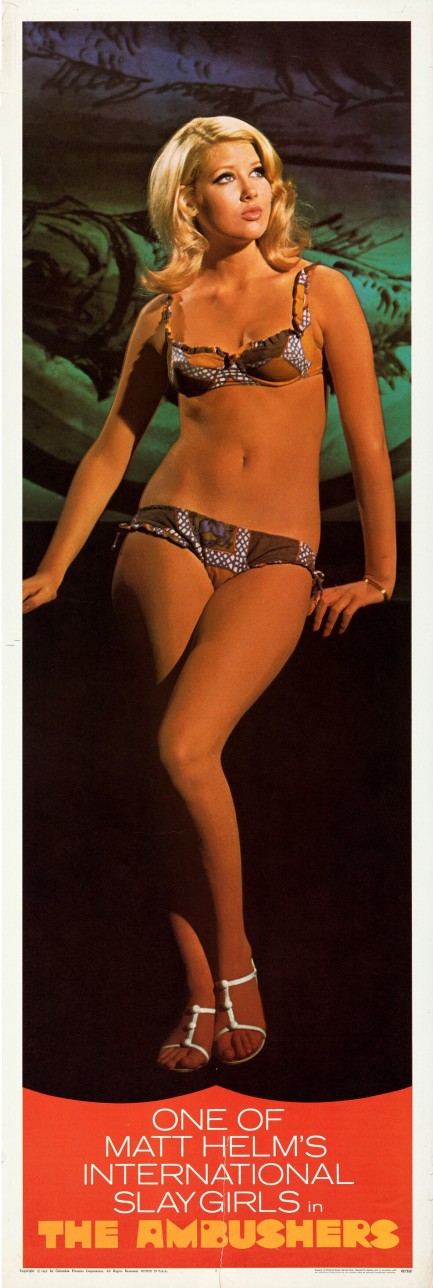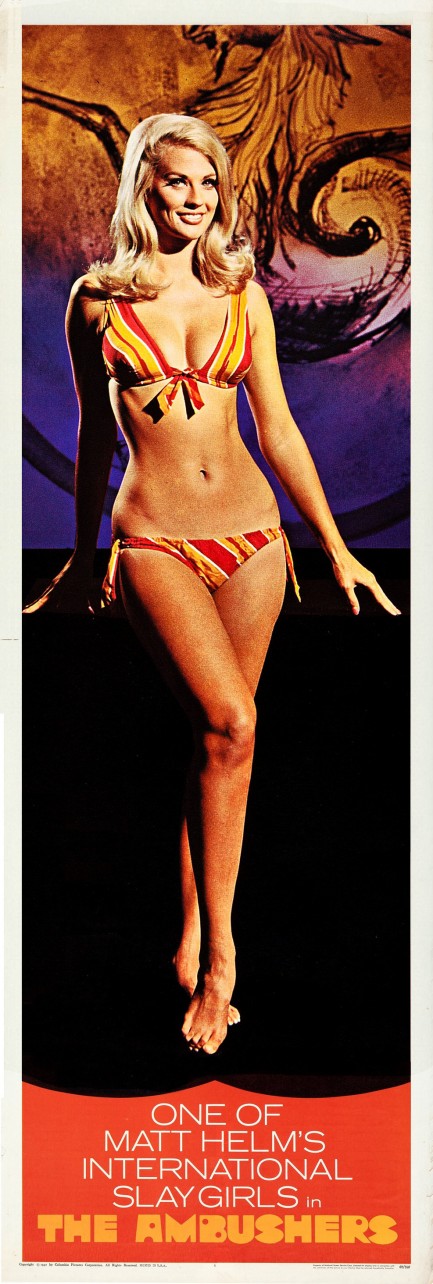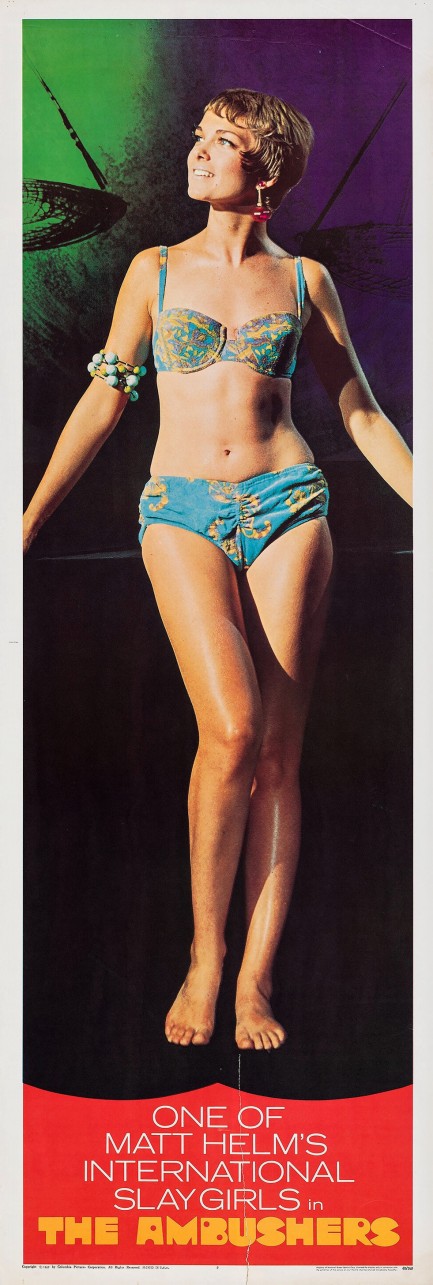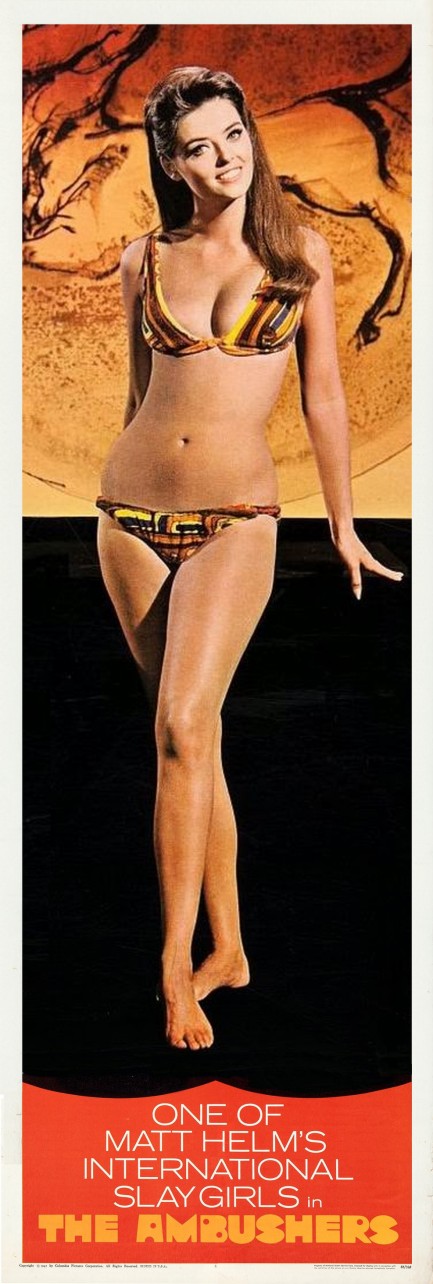 Zip your pants and keep them zipped, Harry. I'm going to bed and you aren't coming with me. 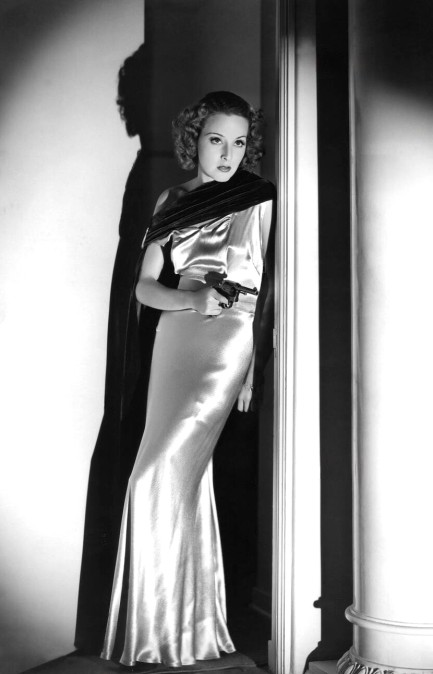
Above is U.S. actress Joan Perry in a promo image made for her 1936 crime drama Shakedown. She appeared in about twenty films beginning in 1935 and was out of acting by 1941, when she married Columbia Pictures co-founder and president Harry Cohn, one of the most hated and feared men in Hollywood. Cohn allegedly attacked actresses, demanded and received sex for film roles, and infamously had mob acquaintances threaten to kill Sammy Davis, Jr. if he kept canoodling with Kim Novak. Perry stayed wedded to the guy for seventeen years, until his death. Afterward, she married twice more, but one union lasted only two years, and the other lasted three. Which goes to show that you never can tell about relationships—or for that matter, people.
 If you want to be taken seriously bring serious backup. 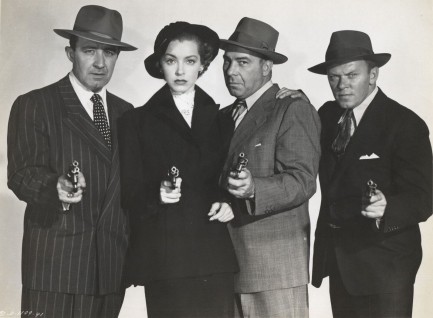
This promo image, with a Columbia Pictures serial number in the lower lefthand corner, was made for the 1949 crime drama Mary Ryan, Detective, and shows Paul Bryar, Marsha Hunt, Ben Welden, and William Phillips. We love the shot, and because of it we'll watch the movie and report back.
 You always say guns don't kill people, people kill people. Before we go on, should I explain the concept of a false dichotomy? 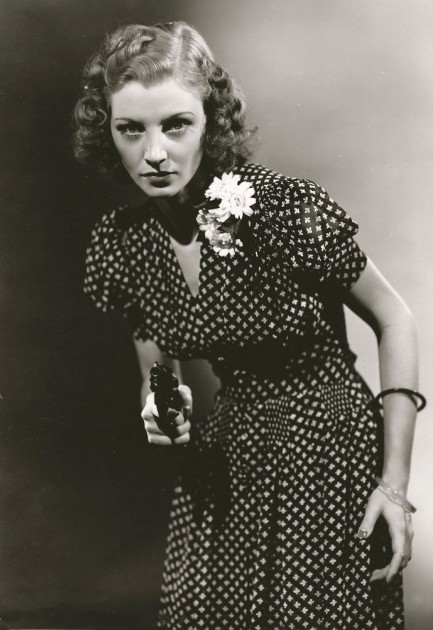
Above is U.S. actress Iris Meredith, looking deadly and intense in a promo image from The Spider's Web, a Columbia Pictures serial based on the pulp writings of Norvell Page, dealing with the rivalry between a criminal called the Octopus and a masked hero called the Spider. Meredith was the female lead. She was a pretty big star by the time she appeared in it, having already amassed fifteen screen credits. Every time we read about a serial we remind ourselves to try and find some for viewing, and this one sounds especially fun. Thanks to Archive.org it's available for viewing right here. The image is from 1938.
 Columbia Pictures gives moviegoers a fuller picture of one of its top stars. 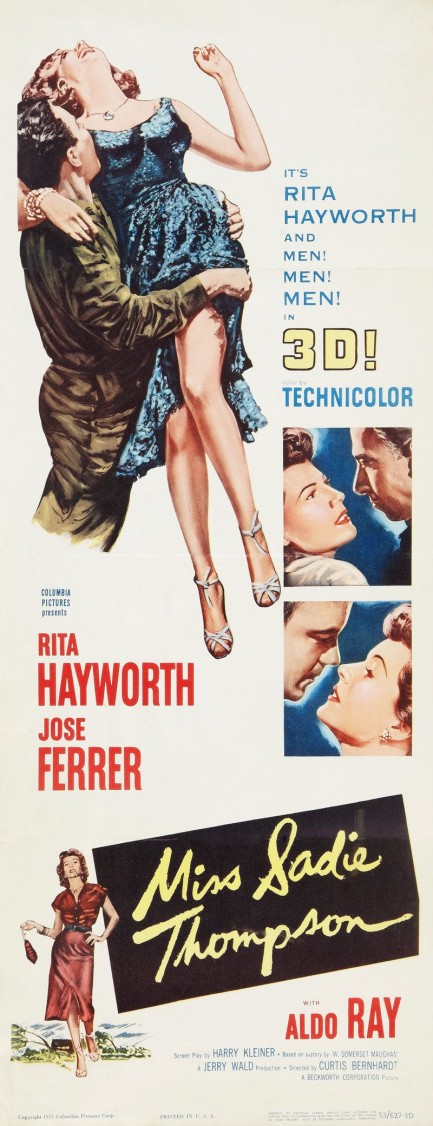
Above is a poster advertising the drama Miss Sadie Thompson. When we watched the movie a few years ago we had no idea it had been in 3-D. It seems like a strange choice for such treatment. Now we'll have to watch it again and see what things are thrust at the camera. We're hoping whatever they are, they're all attached to Rita Hayworth. In the meantime, below is a flyer also touting the film's 3-D run. Though it was supposed to premiere “at Christmas,” the American Film Institute tells us it actually first showed on December 23 in New York City, before receiving a nationwide opening in February 1954. The phrase “at Christmas,” we suppose, might imply anytime during the season. Sadie Thompson is an interesting movie, though not Hayworth's best. You can read our pithy thoughts here.
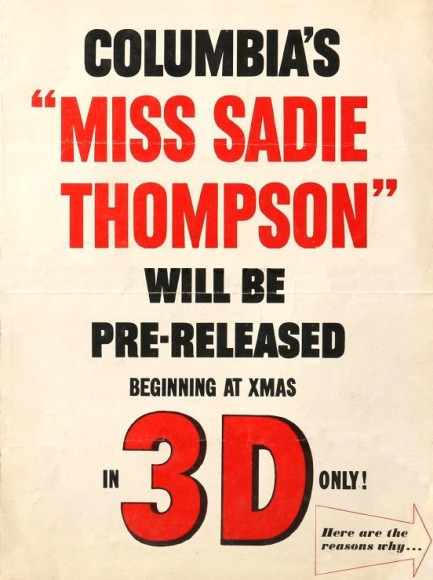
 Rita Hayworthová was worth the wait. 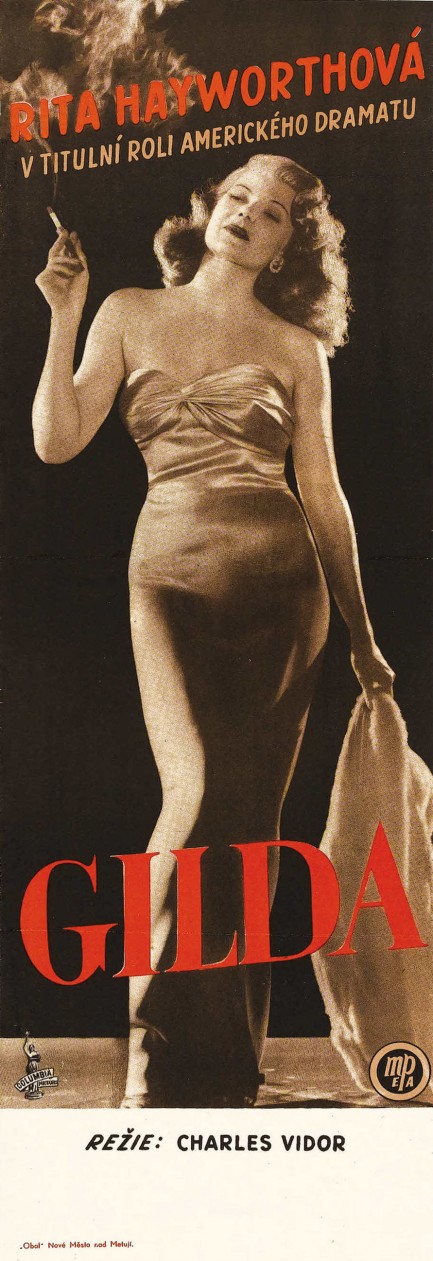
This Czech poster for the film noir classic Gilda isn't substantially different from the U.S. promo, but the Czech text makes it worth a share. Rita Hayworthová? Love it. “V titulní roli americkeho dramatu”? That's easy to figure out—“In the title role of the American drama.” The online translator agreed. There's no Czech release date for this, but we can make a guess. It was released in early 1946, played at the Cannes Film Festival in September of that year, and began to reach secondary European markets in early 1947. So it probably reached then-Czechoslovakia in mid-1947. But whenever it showed up, Hayworthová made it a mandatory night at the movies.
 Casablanca drifts 2,500 miles east and loses a little something along the way. 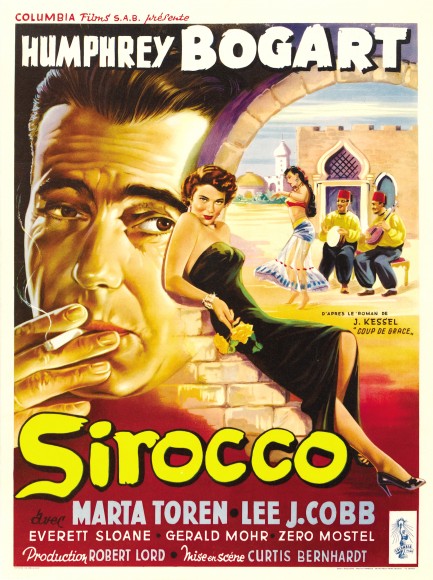
Above you see a nice French poster for the Humphrey Bogart adventure Sirocco, which we touched upon briefly several months back. As we noted then, Columbia Pictures promoted the film as being, “beyond Casablanca...” but Sirocco comes up short in that department. How could it not? It's like saying, “beyond chocolate chip cookie dough ice cream,” or “beyond a raspberry gin Ricky,” or “beyond the 2003 Hurricanes-Buckeyes NCAA Championship Game.” These things are not possible. But Sirocco is actually pretty good anyway, owing largely to its setting in 1925 Damascus, Syria (the film was actually shot in Yuma, Arizona, but the illusion worked adequately).
Plotwise, local independence fighters are trying to drive out French occupiers via any means deemed necessary, including what we call today terrorist bombings. Bogart plays Rick from Casablanca, except he's named Harry Smith. But he's the same cynical, opportunistic, womanizing lone wolf he was before, who instead of running a bar, runs guns. He has no ideology in his profession, except love of money, and will work for whoever can hire him, Syrian or French. As the situation in Damascus grows increasingly fraught he finds himself unwillingly stuck between the locals and the occupiers. He also finds himself in a love triangle with slinky Märta Torén and a French military officer played by Lee J. Cobb.
The movie quickly coalesces around what we like to think of as the big three Bogart plot devices: romantic feelings threaten to upset his hard-won cynicism, he must make a choice between desire and conscience, and he must beat the clock if he hopes to get out of Dodge with his skin intact. Beyond Casablanca? Columbia pretty much strip mined Casablanca, is what happened. Even so, Bogart had few serious misses in his career, and Sirocco isn't one of them. Fans will get to see him doing exactly what made him an icon, and for that reason alone we think it's worth a watch. After premiering in the U.S. in mid-1951, it opened in France today the same year.  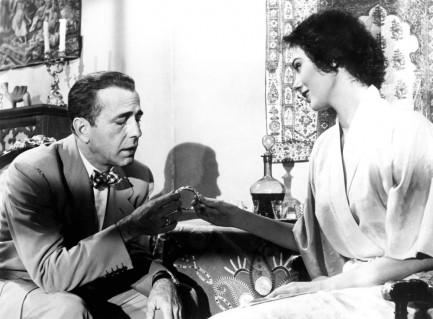 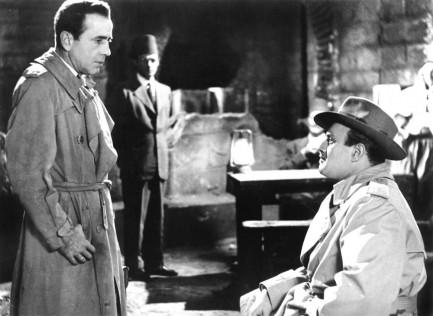 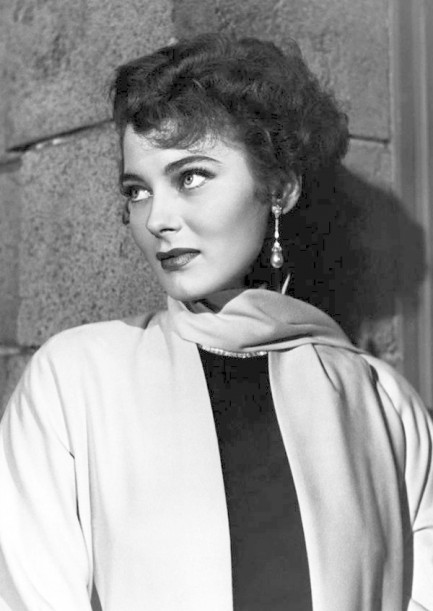   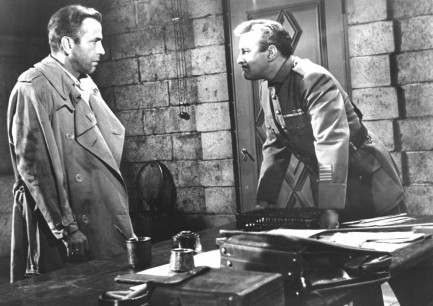 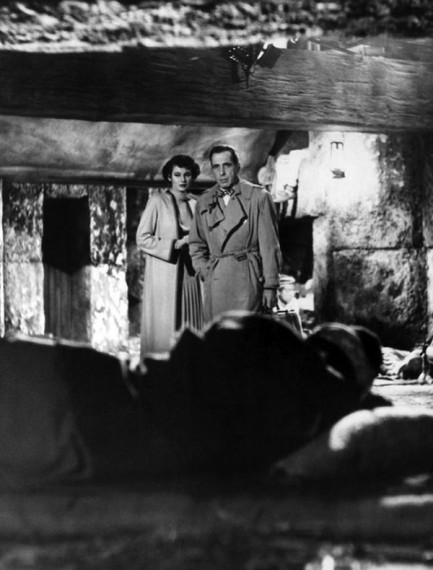  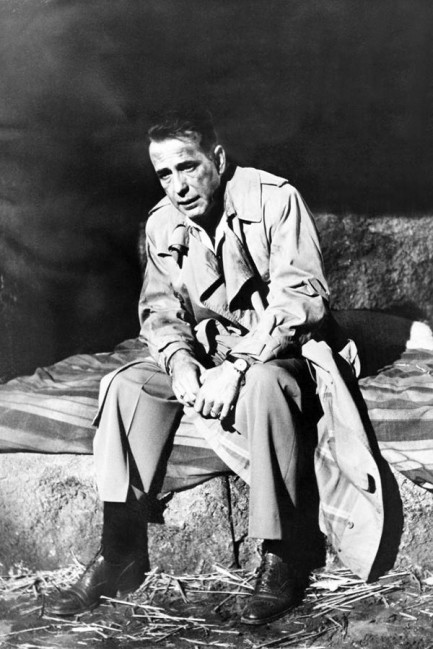 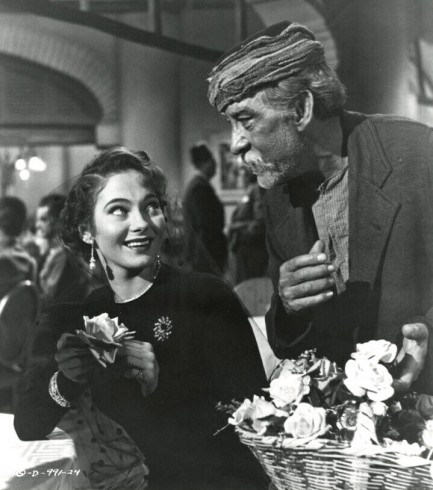 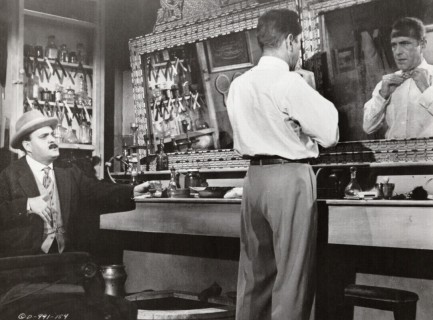 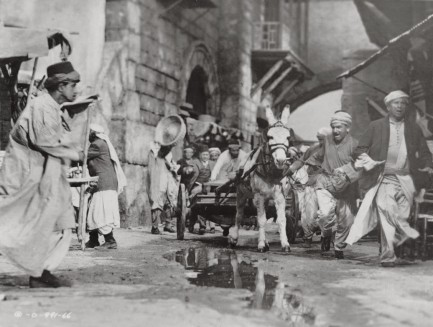 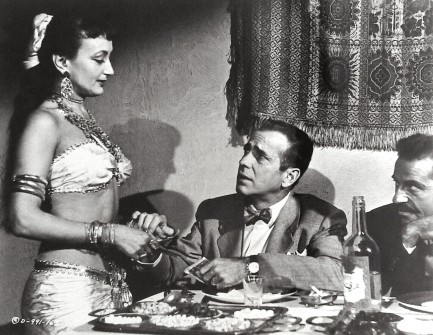 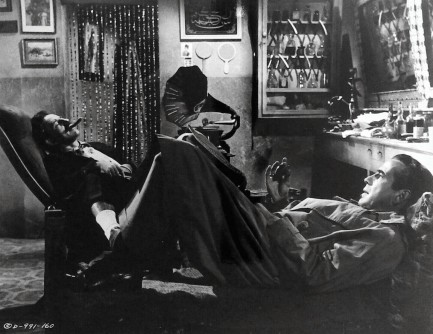 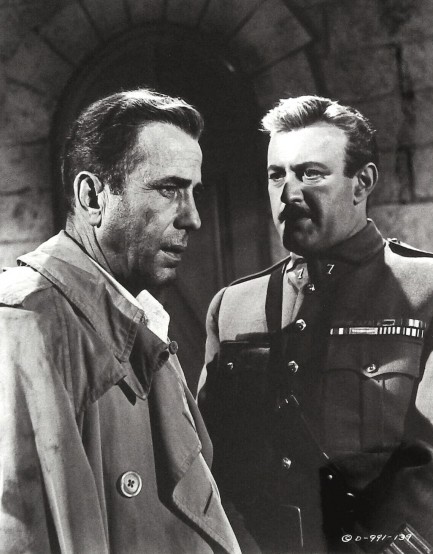 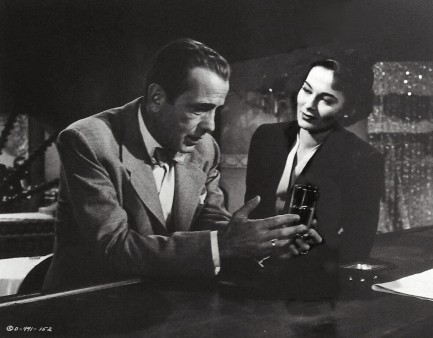 
 If she were architecture she'd be streamline moderne. 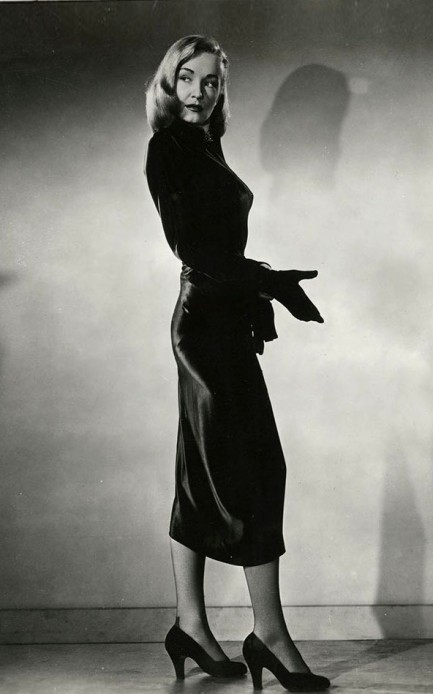
Above, a Columbia Pictures promo image of Dutch actress Nina Foch made for her 1949 drama Johnny Allegro. She looks like she's getting her gloves on for some shady activity or other, which fits, since in the movie she plays a woman with a very mysterious background. We may revisit the subject later. In the meantime you can see another Foch photo here.
 Welch proves indispensable to yet another ’60s caper flick. 
Above you see a promo poster for 大泥棒, or “Great Thief,” made for the 1968 Raquel Welch/Robert Wagner caper flick The Biggest Bundle of Them All. The U.S. poster was painted by master illustrator Robert McGinnis, but we decided to show you the Japanese art instead because it's rare. There are two more Japanese promos below that are also rare. We'll get to the McGinnis version later. In the film, Wagner and his henchmen kidnap an elderly Italian gangster played by Vittorio De Sica and hold him for ransom. Problem is he has no money. At first they don't believe him, but when it finally becomes clear he's broke, Wagner and Co. try to cut bait. But De Sica is terrified all Italy will find out he couldn't pay his own ransom. His reputation would be ruined. So he convinces his kidnappers to join him in a swindle that will maintain his reputation, make him rich again, and earn the kidnappers more money than they ever imagined. De Sica becomes the boss of his own abductors.
For a crime-comedy, it's an ingenious premise, which makes it a shame it wasn't original. Another movie with an almost identical plot called The Happening was in production at Columbia, and when the studio got wind of The Biggest Bundle of Them All it threatened to sue. Metro-Goldwyn-Mayer agreed to give Columbia a cut of Bundle's profits and a legal bloodbath was avoided, but in the same way De Sica's big caper doesn't exactly play out perfectly, Bundle's profits didn't blow the roof off MGM headquarters as planned. And no wonder. It wasn't just the script that wasn't original—the film falls into the same category as continental crime capers like Charade, To Catch a Thief, and Topkapi, and those make for crowded and treacherous cinematic waters. Bundle isn't sophisticated enough, or exciting enough, or infused with enough sexual chemistry to compete with better films of its ilk.
Speaking of sexual chemistry, Welch is naturally the big attraction of any movie she's in, and we've seen enough of her work now to understand that she was more of a persona than an actress during this mid- to late-’60s period. In film after film she basically played herself. Here she smiles and quips and poses, and it's all very Welchian in that groovy way her fans had come to expect—bikinis, lingerie, go-go dancing and all. The movie would be worth far less without her. There are also supporting appearances by Edward G. Robinson and Femi Benussi, while future blaxploitation icon Godfrey Cambridge is one of the kidnappers, so there's plenty for stargazers to enjoy here, but we can't call the movie a success. If you have nothing to do some evening, it might give you a few smiles, but not a bundle of them. After premiering in the U.S. in 1968, The Biggest Bundle of Them All opened in Japan today in 1968.
 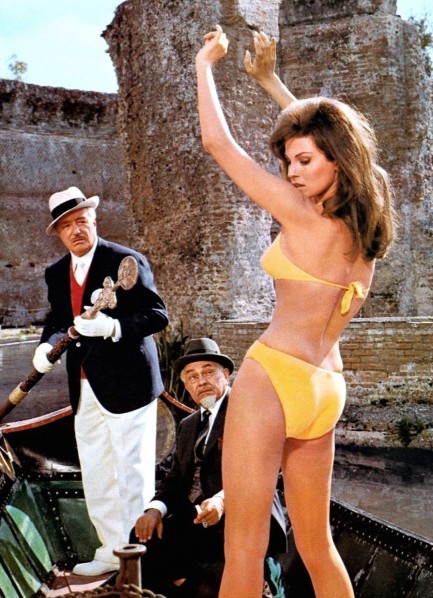  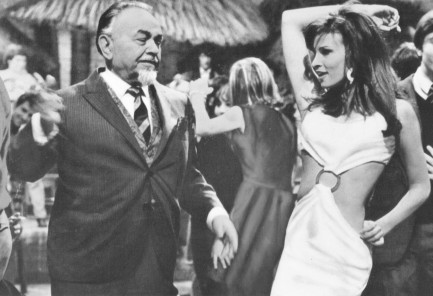    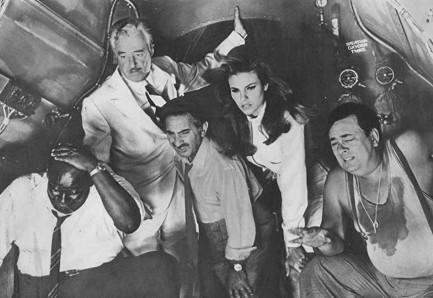  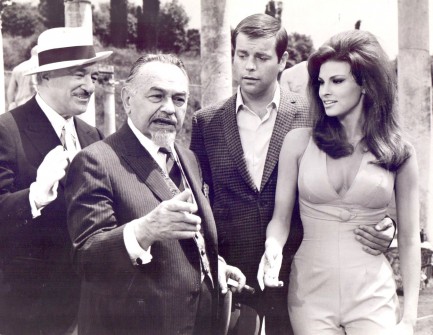  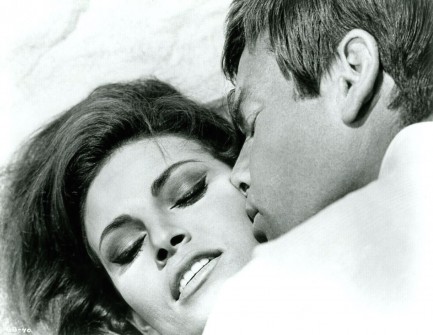      
 Famed director ends up with too many cooks in his kitchen. 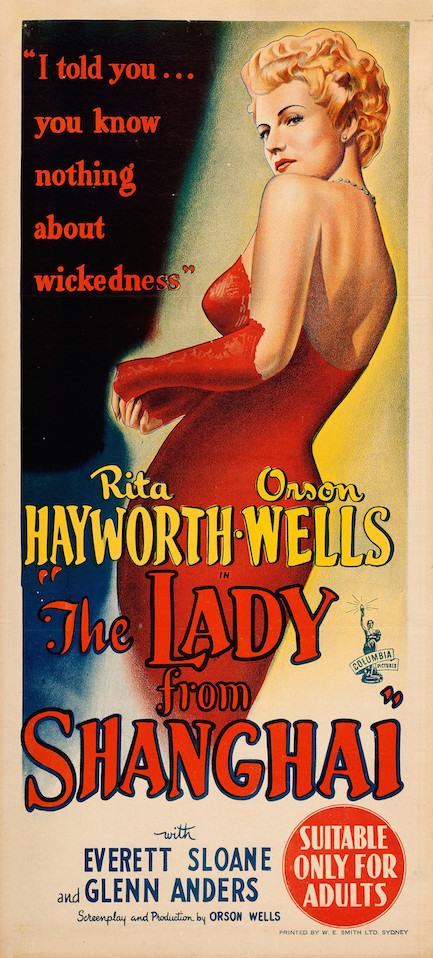
The film noir The Lady from Shanghai, starring Hollywood icons Rita Hayworth and Orson Welles, and directed by Welles, premiered in 1947 but reached Australia today in 1948, with this stunning promo poster having been distributed Down Under to help attract audiences. This film had amazing promos in many countries, some of which we'll show you later, and they all spelled Welles' last name correctly, which this one didn't. All the brilliant poster work around this movie is ironic, because Harry Cohn, who was the shot-caller at Columbia Pictures, hated it. He even shelved the flick for a year while he waited for what he deemed to be the best date to release it. When he finally did, what audiences saw was a radically altered version of Welles' original edit.
What did Cohn specifically hate about the film? Foremost there was its length, which was 155 minutes, and which Cohn ordered condensed, with the final running time coming to a mere 88 minutes. He also felt Hayworth didn't have enough close-ups, so he had those shot during extensive re-takes. Hayworth also didn't have a song, which was standard for film noir leading ladies, so Cohn had a number added and had Hayworth's voice dubbed. He hated the lighting, which he felt was a negative result of Welles choosing location work over controlled studio conditions. And he especially hated that Hayworth had agreed to chop off her auburn hair and dye it platinum. The list goes on but you get the point—clashing creative visions. Nothing new in Hollywood.
The Lady from Shanghai finds Welles playing a typical film noir schmo who falls in love with a femme fatale and is drawn into a murder plot. Other familiar film noir tropes include a trip to Mexico (not in the original novel by Sherwood King) and a tense court showdown. But what's decidedly uncommon here is Welles' visual mastery of the cinematic form. His abilities there have been exhaustively discussed and are in no way overrated, but visuals are only part of the filmic equation. There's also narrative pace and story cohesion and emotional tone, and those are areas where the movie runs into a bit of trouble. Since Welles' cut was so much longer (and presumably better) than what has ever been seen by the public, many of those problems were probably introduced by clumsy third parties.
But we can only judge what we see. Since all that missing footage is thought to have been destroyed, it takes a major leap of faith to see a masterpiece in what Welles himself thought was a diced up travesty of his original vision. We don't understand how anyone can truly revere him, yet disregard his artistic opinion. But that's exactly what some contemporary film writers do. We recently read a review that discussed how well the visuals and music work together, but Welles hated the score, which he had no control over and which lacked the subtlety he wanted it to have. We suggest that a critic is trying way too hard when they lavish praise upon a director for something he didn't even do. Welles was a genius—agreement on that point is universal. But even geniuses are not so magical that their abilities can overcome the artistic myopia and careless scissors of studio heads.
The Lady from Shanghai received mixed reviews when released, and ultimately, those reviews strike us as fair. There's plenty here worth seeing, particularly the ravishing Hayworth and nice location work in Acapulco and Sausalito, and of course Welles makes shots like Steph Curry makes 3s. But even so, the final result is good but not great. Not a failure, but not a top notch film noir. Calling The Lady from Shanghai one of the best of the genre is just unfair to the many, many great noirs that were made. Still, if you're a noir fan you should see it. And we're confident you'll enjoy it like we did. On the other hand, if you've never watched a film noir and this happens to be first one you see, we can easily picture you giving a shrug and drifting away from the genre, never to return. 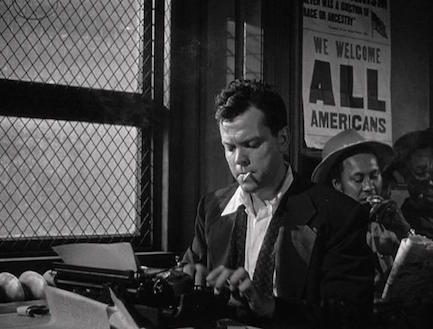 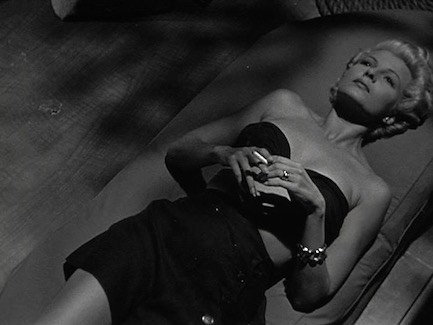 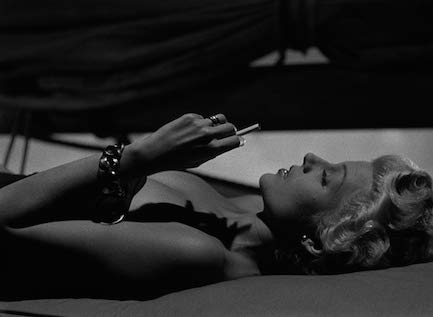 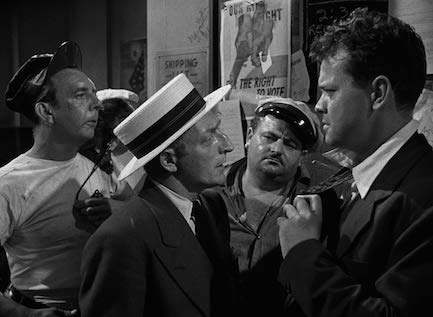 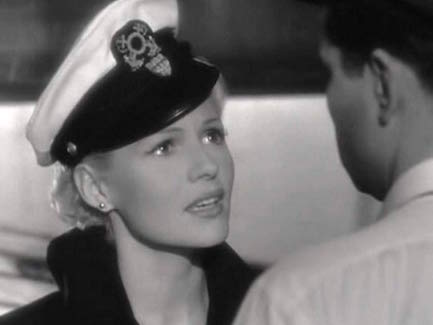 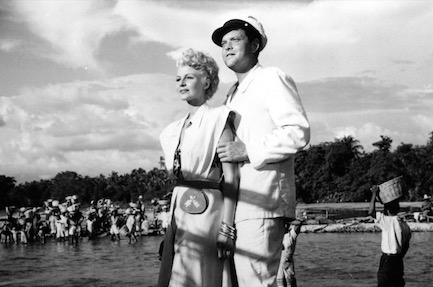 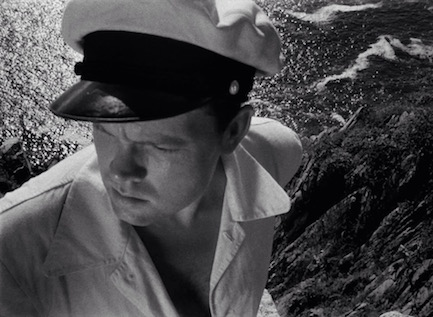 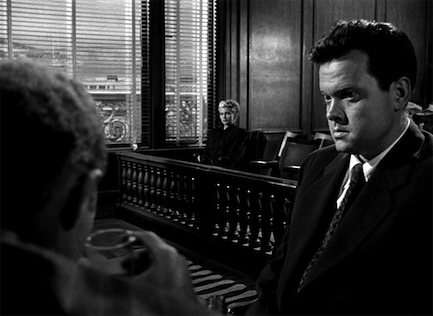 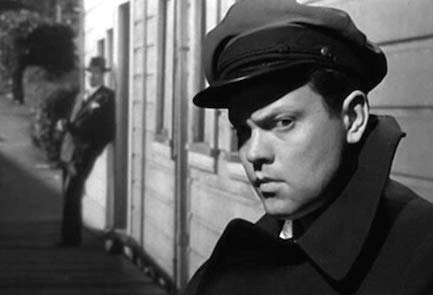 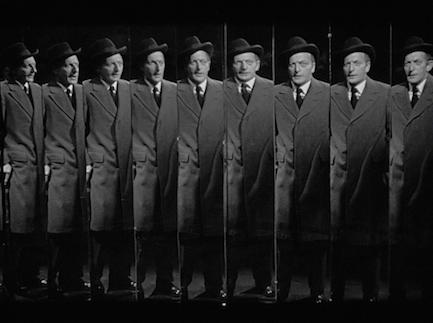

|
 |

The headlines that mattered yesteryear.
2003—Hope Dies
Film legend Bob Hope dies of pneumonia two months after celebrating his 100th birthday. 1945—Churchill Given the Sack
In spite of admiring Winston Churchill as a great wartime leader, Britons elect
Clement Attlee the nation's new prime minister in a sweeping victory for the Labour Party over the Conservatives. 1952—Evita Peron Dies
Eva Duarte de Peron, aka Evita, wife of the president of the Argentine Republic, dies from cancer at age 33. Evita had brought the working classes into a position of political power never witnessed before, but was hated by the nation's powerful military class. She is lain to rest in Milan, Italy in a secret grave under a nun's name, but is eventually returned to Argentina for reburial beside her husband in 1974. 1943—Mussolini Calls It Quits
Italian dictator Benito Mussolini steps down as head of the armed forces and the government. It soon becomes clear that Il Duce did not relinquish power voluntarily, but was forced to resign after former Fascist colleagues turned against him. He is later installed by Germany as leader of the Italian Social Republic in the north of the country, but is killed by partisans in 1945.
|

|
|

It's easy. We have an uploader that makes it a snap. Use it to submit your art, text, header, and subhead. Your post can be funny, serious, or anything in between, as long as it's vintage pulp. You'll get a byline and experience the fleeting pride of free authorship. We'll edit your post for typos, but the rest is up to you. Click here to give us your best shot.

|
|










